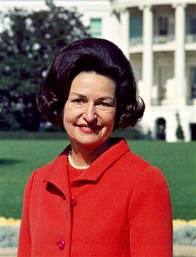
- Vets Beware!
Are you a veteran interested in VA benefits . . . but worried about being taken for an “annuity ride”? Want to know the best way to use annuities if you are looking at VA benefits? Read on!
The problem: Some unscrupulous annuity sales people use VA benefits as an opportunity to sell unsuspecting veterans totally unnecessary and inappropriate annuities. A few months ago those practices triggered close and heated Congressional inquiry that will probably lead to a new federal statute.
It does not follow, however, that all annuities are inappropriate or that anyone who may recommend an annuity is out to scam some poor and unsuspecting veteran. Read this article and you’ll understand the difference between “appropriate” and “inappropriate.”
In fact, annuities can be an extremely attractive VA benefits strategy because they can be used to reduce the amount of otherwise countable assets by converting some of those assets into an income stream.
Medicaid has specific, detailed rules that apply to annuities when determining whether they are countable or non-countable. You may wish to review the Medicaid treatment of annuities in an earlier article in this series. Under the VA rules, on the other hand, an immediate annuity that provides an income stream is not countable. Fairly simple, that . . . at least for now . . . we’ll see what new regulations look like in a year or so.
First, pound into your head a few basic rules of VA benefits.
A Few Plain Facts About Veterans Benefits
- Veterans benefits impose NO transfer penalties like Medicaid does.
- A veteran must not have assets in excess of certain levels.
- A veteran can actually transfer the excess assets to another person and instantly qualify for benefits.
- Transferring to another person might not be too smart, though.
- What if that person dies, divorces, gets sued, goes bankrupt?
- What if the veteran later needs Medicaid (which DOES impose transfer sanctions)?
- There are a number of different strategies involving retitling assets, or perhaps using trusts, that do NOT involve an inappropriate annuity!
Bad/Abusive Advice

- Ya Wanna Annuity?
The worst cases involve the veteran (or widow) being counseled to transfer most of his or her money to a child (at this point the veteran is qualified for benefits, but he or she won’t be told that) and THEN having the child purchase the “special” annuity. Buried in the fine print, the annuity will have huge surrender charges for many years. And, of course, the annuity sales person will collect a hefty commission.
Stuffing the money in such an annuity will subject the transferred money to a Medicaid transfer sanction and lock it up where it will be difficult to get to the money if Medicaid becomes necessary and the family tries to “undo” the annuity.
If the veteran insists on transferring money to someone else (maybe a child) perhaps the safer course is to have the child drop the funds into a trust. After the child funds the trust there may be a measure of protection for those assets. I say a “measure of protection” because if the child has creditor problems at the time the money is transferred, the funds are subject to being snapped up immediately by those creditors.
The veteran could set-up and fund the trust himself, but there is a high likelihood the trust will then be countable to the veteran for VA benefit purposes. IF an advisor suggests that the veteran set up and fund a trust, please be sure the advisor knows what he or she is doing. The strategy has to be pursued very carefully by a practitioner who thoroughly understands the legal issues involved.
Convert Assets To Income
Perhaps the better approach is for the veteran to use excess assets to purchase an immediate annuity (you should go back and review the first article in this series if you don’t recall what an “immediate annuity” is).
Also recall, the actual benefit payable to a veteran is the difference between his ADJUSTED income and the maximum VA benefit level available for his situation. His total income is adjusted downward by the total of his (or a spouse’s) medical expenses. For example, if a married veteran is entitled to a maximum monthly benefit of $2,019, and his and his wife’s total monthly income is $3,100, he will not be entitled to any benefits unless he has some medical expenses that will adjust his income to less than $2,019. If he is in an assisted living facility and is paying $2,600 a month and has $600 of other medical expenses, his adjusted income is ZERO (actually, he is “$100 in the hole”) and he’ll be entitled to the maximum of $2,019.
Be careful: If he purchases an immediate annuity that will pay $600 a month, then his gross income will be $3,700, and after subtracting $3,200 in medical expenses, his adjusted income will be $500 and he’ll be entitled to only $1,519 ($2,019 minus $500).
Here Is What The Pros Know

- A Balloon Payment
An immediate annuity does not necessarily mean an annuity that pays equal periodic payments for the life of the annuity. An annuity can be structured with a Big, Fat, Balloon at the end. A $100,000 annuity that pays $100 monthly for 60 months and then pays a lump sum of over $90,000 in 5 years will not be countable and will only add $100 to the monthly income calculation. If medical expenses are high enough, it will not affect the VA benefits (and, in fact, it may come in handy).
The annuity can also be structured to “roll it out” further as the veteran nears the sixtieth month anniversary or term date.
It can be even fancier. Such an annuity can be structured to be revocable in the event that Medicaid becomes a necessity. Obviously an annuity structured along these lines will be countable for Medicaid purposes . . . so the ability to “bail out” and restructure the annuity to be Medicaid compliant is attractive.
Final Thoughts On VA Benefits and Annuities
- Do not try any of the foregoing without expert help.
- There are regulations incubating and I expect to see something in 12 to 18 months (the outcome of the November elections should not make a difference). What those regulations will look like is anybody’s guess.



 Annuities for the Married Couple. When dealing with a married couple, annuities open up a completely new and attractive strategy. Let’s use the Ward Cleaver facts but assume that Ward is married to June.
Annuities for the Married Couple. When dealing with a married couple, annuities open up a completely new and attractive strategy. Let’s use the Ward Cleaver facts but assume that Ward is married to June. shorter than 36 months is extremely difficult. There are, however, specialty annuity providers that issue extremely short term annuities. These companies market their services to elder law attorneys. Accordingly, a competent elder law attorney will be able to refer you to one of these companies.
shorter than 36 months is extremely difficult. There are, however, specialty annuity providers that issue extremely short term annuities. These companies market their services to elder law attorneys. Accordingly, a competent elder law attorney will be able to refer you to one of these companies.


 high pressure tactics to sell unnecessary trust services at inflated prices. So, I was gratified to learn that I wasn’t alone.
high pressure tactics to sell unnecessary trust services at inflated prices. So, I was gratified to learn that I wasn’t alone. The day of the hearing, Senator Burr and Senator Wyden introduced
The day of the hearing, Senator Burr and Senator Wyden introduced 



